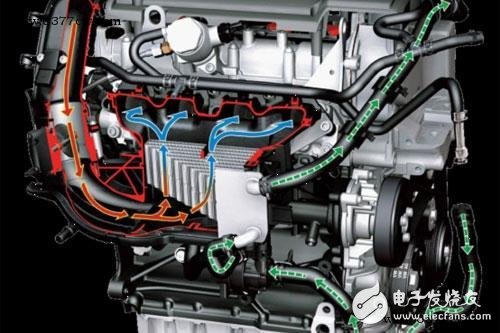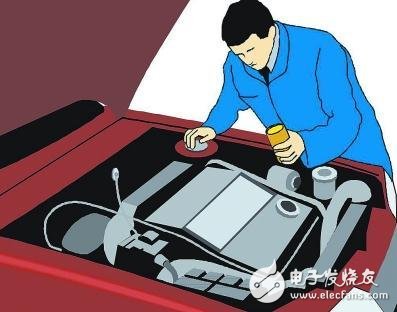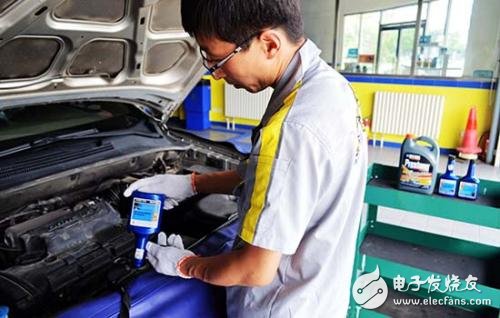In the case of continuous operation of the car engine, its maximum combustion temperature may be as high as 2,500 degrees. Even at idle or low speed, the average temperature of the combustion chamber is above 1000 degrees. Operating at such high temperatures will allow the interior of the engine. Accelerated wear of the parts can also degrade the oil. In order to ensure that the car engine can maintain its normal operating temperature, the car manufacturers have a cooling system on the car engine. The automobile engine cooling system is one of the six major systems of the engine. Its function is to dissipate part of the heat absorbed by the heated parts in time to ensure that the engine works at the optimum temperature. 1. Look at the water tank: The normal water tank should have the same temperature up and down when the car is running. If there is a cold half of the heat, you can judge the internal blockage of the water tank. The water tank can be connected to a water pipe of 2 kg pressure and flushed in the reverse direction. If the blockage is serious, a small amount of cleaning agent can be used, and at the same time, the dirt of the water tank is cleaned and observed for leakage. 2, look at the thermostat: Some people think that removing the thermostat can prevent the water temperature from being high. In fact, as long as the thermostat works normally, it will not cause the water temperature to be too high, and the engine is very harmful when operating at low temperatures for a long time. In addition, many engine thermostats It is a two-way function. When the thermostat is turned off, the cooling water is forced to go through a small cycle. When the thermostat is turned on, the small cycle is closed, and the cooling water is all gone. If the thermostat is not installed, due to the throttling effect of the local resistance of the pipeline, the actual flow to the large cycle is that the water is small and the water temperature is increased. 3. Check the pump: There are three ways to damage the pump: leakage, throwing, and impeller corrosion. The so-called throwing is that the pump shaft and the impeller have too much clearance. When the engine speed reaches a certain level, the pump impeller cannot reach the corresponding speed, resulting in poor water circulation. 4, check the fan Fans are the main components of the cooling system, and some cars have eliminated fixed fans and replaced them with electromagnetic and fan with silicone clutch. It is characterized in that the fan basically does not work when the vehicle is cold, and the heat dissipation reaches the maximum when the hot car is used; the main fault of the silicone oil fan clutch is oil leakage, and the main fault of the electromagnetic fan clutch is damage of the water temperature switch, damage of the line, damage of the electromagnetic coil. . 5, check the exhaust system In addition to the heat dissipation of the engine, part of the heat can be dissipated with the exhaust gas. The oil can also take away some of the heat, and the air convection around the engine plays an irreplaceable role. Therefore, do not forget to check when the engine is overheated. Whether the exhaust system (especially the model with catalytic converter) is smooth, and the oil and transmission oil heat sinks are intact. In addition, the air hood (commonly known as the wind ring) near the engine fan plays a vital role in the heat convection in the cabin, so be careful when checking. The cooling system must be maintained for 2 years or 40,000 kilometers. The five major standards for cooling system maintenance: 1. The cooling fluid capacity is lower than the capacity line; 2. The pH value of the coolant is ≤6; 3. The coolant deteriorates with scale; 4. The freezing point of the coolant is higher than -15 °C; 5, high water temperature or boiling phenomenon; In the case of the above, the cooling system should be maintained. 1. Check the sealing of the cooling system, the tightness of the fan belt, the sensitivity of the thermostat and the temperature of the cooling water, and pay attention to maintaining sufficient cooling water. 2. The cleaning and cooling system includes the scale adhered to the radiator and the water jacket to prevent the scale from affecting the heat dissipation performance of the cooling system. First, preparation work Check the system for mechanical or electrical faults. If yes, clean it after inspection; prepare the required products, equipment and tools. Second, cleaning the cooling system Drain the old antifreeze, fill it with water, add the tank cleaner (RV3-35), idling for 30 minutes, or add the tank cleaner (RV3-35) and idling for 30 minutes. Third, replace the old liquid and add new liquid and water tank protection agent (RV3-36) In the case of idle speed, connect the device to the quick connector at the water tank on the engine and start the liquid change process. When changing the liquid, add a little throttle and pay attention to the pressure gauge indication of the equipment. If the vibration is severe, increase the throttle. Fourth, the end of recovery work After all the pipes have been restored, idle. Check the liquid level and make up. Check for leaks and deliver the car after everything is normal. 14.8V Lithium Polymer Battery,Battery For Medical Equipment,Sc3000 Ni-Mh Battery,1.2V Ni-Mh Battery Langrui Energy (Shenzhen) Co.,Ltd , https://www.langruibattery.com


